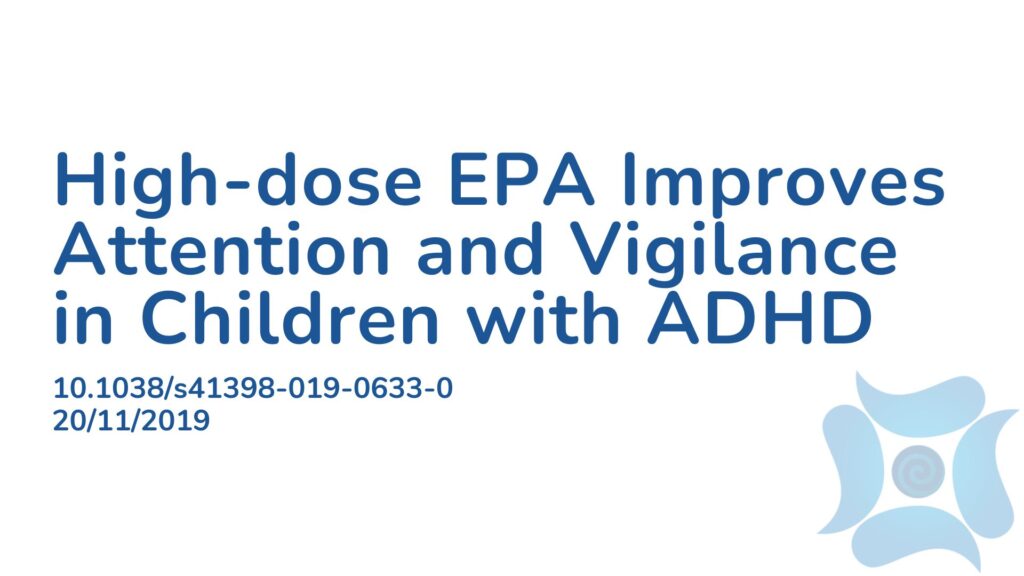Summary:
This study is a 12-week placebo-controlled trial examining the effects of eicosapentaenoic acid (EPA), which is a common essential fatty acid, in Attention Deficit Hyperactivity Disorder (ADHD). The control group consumed 1.2 grams of EPA versus the placebo group who consumed no EPA. The researchers then compared cognitive function between the two groups. The results interestingly showed that the ADHD group consuming the EPA had improved cognitive symptoms, particularly if the baseline EPA level was lower. However, youth with ADHD that had high baseline EPA levels did not respond as positively to better cognitive outcomes with the use of more EPA.
Abstract:
No studies have examined the relationship between endogenous polyunsaturated fatty acids (PUFAs) levels and treatment response to PUFAs. We conducted a 12-week, double-blind, placebo-controlled trial comparing the effects of high-dose eicosapentaenoic acid (EPA, 1.2 g) and placebo on cognitive function (continuous performance test) in n = 92 youth (age 6–18-years-old) with Attention Deficit Hyperactivity Disorder (ADHD). Blood erythrocytes PUFAs were measured before and after treatment, to examine the effects of baseline endogenous EPA levels on treatment response and the effects of EPA treatment on PUFAs levels. Secondary measures included other ADHD symptoms, emotional symptoms, and levels of plasma high-sensitivity c-reactive protein (hs-CRP) and brain-derived neurotrophic factor (BDNF). Overall, EPA group improved more than placebo group on focused attention (variability, Effect size (ES) = 0.38, p = 0.041); moreover, within youth with the lowest baseline endogenous EPA levels, EPA group improved more than placebo group in another measure of focused attention (hit reaction time, HRT, ES = 0.89, p = 0.015) and in vigilance (HRT interstimulus interval changes, HRTISIC, ES = 0.83, p = 0.036). Interestingly, EPA group improved less than placebo group in impulsivity (commission errors), both overall and in youth with the highest baseline EPA levels, who also showed less improvement in other ADHD and emotional symptoms. EPA increased blood erythrocytes EPA by 1.6-fold but not DHA levels, and did not affect hs-CRP and BDNF plasma levels. In conclusion, EPA treatment improves cognitive symptoms in ADHD youth, especially if they have a low baseline endogenous EPA level, while youth with high EPA levels may be negatively affected by this treatment.
Article Publication Date: 20/11/2019
DOI: 10.1038/s41398-019-0633-0




